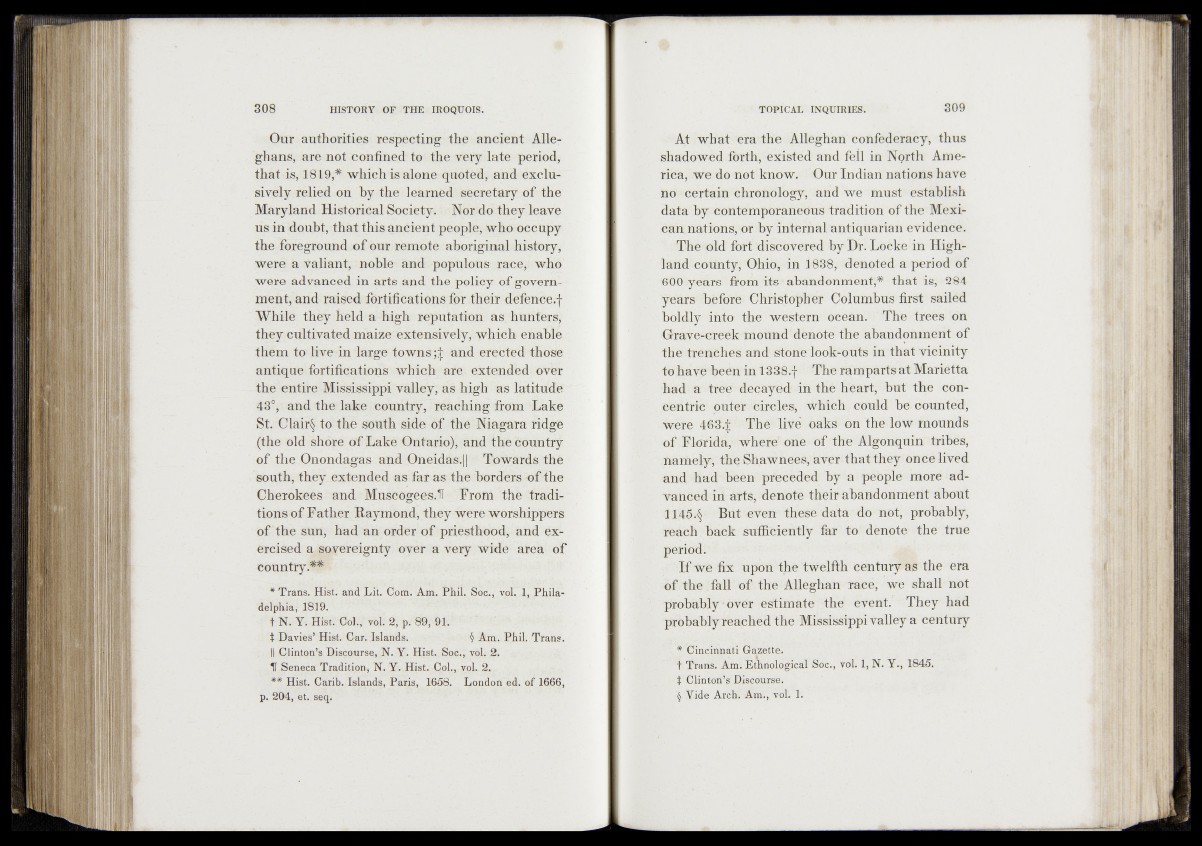
Our authorities respecting the ancient • After
ghans, are not confined to the wefy late period,
that is, 1819,* which is aloné quoted; and exclusively
relied on hy the learned secretary of the
Maryland Historical Society^ s J^or do th ^ leave
us in doubt, that this ancient people, who occupy
the foreground of our remote aboriginal, history,
were a valiant, noble and populous race,*: who
were advanced in arts and the policy of government,
and raised fortifications for their defencie.f
While they held a high refutation as hunters,
they cultivated maize extensively, which enable
them to live-in large town^|?- and erected those
antique fortifications which are extended over
the entire Mississippi valley, as high as latitude"
43V and the lake country, reaching from Lake
St. Clair§ to the south side óf thé Niagara ridge
(the old shore of Lake Ontario), and the country
of the Onondagas and QneidasJppt Towards the
south, they extended as far as the borders -ofthe
Cherokees and Muscogees*^ Frorö the traditions
of Father Raymond, they were worshippers
of the sun, had an order of priesthood, and exercised
a^soyereignty oyer a very wide area of
country.**
* Trans. Hist, and Lit. Com. Am. Phil. See., vpL 1, Philadelphia,
1819.
t ft. Y. Hist. Col., vol; 2, p. 89, 91.1 1
t Davies’ Hist. Car. Islands. y Am. Phil. Trans.
I If Clinton’s Discourse, N. Y. Hist. Soe.| vél. 2.
H Seneca Tradition, N. Y. Hist, .(^pl., vol. JL*.
** Hist. Carib. Islands, Par-js, 1658.' London èd. of 1666,
p. 204, et. seq.
At what era the Alléghan confederacy, thus
shadowed forthLexisted and fell in Nqrth America,
we do not know. Our Indian nations have
no certain chronology, and we must establish
data by contemporaneous tradition of the Mexican
nations, or by internal antiquarian evidence.
The old fort discovered by DL Locke in Highland
county, Ohio, in 1838, -denoted a period of
■ftO'O years from its abandonment,* that is, 28 4
years before Christopher Columbus first sailed
boldly into the western-ocean. The trees on
Grave-erêèk tnound’denote the abandonment of
the'trenches, and stone look-outs in that vicinity
to havé héén in 13&8tf£ The ramparts at Marietta
had a treft' decayed -in thé heart, hut the concentric
outer circles-, Which cOuld he counted,
were 4@3^ The live oaks on the low mounds
«f-Florida, where' one of the Algonquin tribes,
namely, the Sh,awnees, aver that theylonce lived
and had been preceded hy a people more advanced
irt arts, denote their abandonment about
-11;434' But even these data do not, probably,
reach , back sufficiently far to denote1-the true
period.
If We fix upon the twelfth century as the era
of the fall of the Alleghan race, we shall not
frobahly * over estimate the event/ They had
probably reached the Mississippi valley a century
* Cincjhpati Graze ttë*
t Trans. Am. Ethnological Sdc., tol. 1, N. Y., 1Ö45.
'X Clinton’s Discourse,
§ Yide Arch. Am., voL 1'.